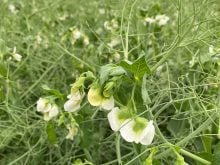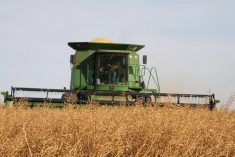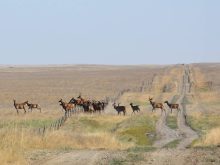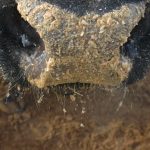A healthy lawn contributes to your property value and adds to a farm’s overall appearance. It also provides a natural, safe surface where your family can play and relax.
By following a few simple tips, you can keep your lawn healthy and green.
Mowing
Mow high, preferably between six and 7.5 centimetres. Mowing short weakens the root system and allows weeds to compete with the grass.
Experts recommend removing only one third of the leaf with each mowing. So, if you mow to six cm, you can let the grass grow to nine cm.
Read Also
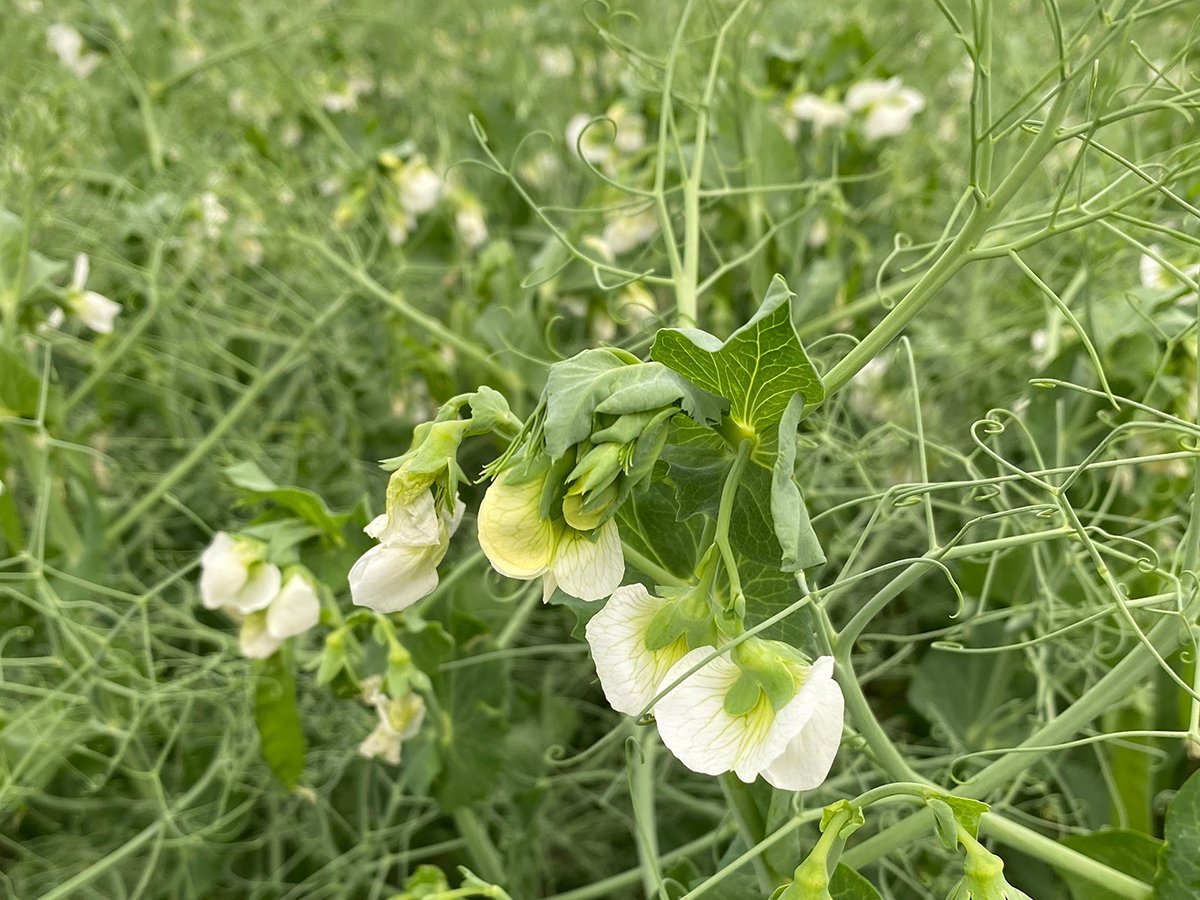
Crop quality looks good this year across Prairies
Crop quality looks real good this year, with the exception of durum.
The shorter you mow, the more frequently you’ll need to mow your lawn to keep to the “one third” rule.
If possible, mow in different directions and alter the pattern each time.
If you cut north-south one week, cut east-west the next week, then clockwise, counter-clockwise, diagonally, and so forth. This will cut more leaf surface on weeds that may tend to lean in the direction of mowing and may help the grass compete.
Mower blades should be sharpened at least once a year. Dull blades tear rather than cut grass blades. The torn leaves give the lawn a whitish appearance and will leave it more vulnerable to disease problems.
Clippings should be returned to the grass. If you only cut one third of the leaf under dry conditions, the clippings will fall evenly on the soil surface. A mulching mower will further chop the clippings, which will help speed the decomposition process.
During the summer, clippings decompose and return nitrogen and other nutrients to your lawn. Decomposition is slower in cool weather.
Watering
Lawns should be watered infrequently and deeply to encourage deep roots.
The amount of water applied will vary depending on the soil type, species of grass, mowing height, temperature, wind and other factors.
Measure rainfall and sprinkler water with a rain gauge or a container with straight vertical sides, such as a coffee can or a tuna can. Generally, one inch is considered an adequate soaking.
High spots and south-facing slopes will need more.
Apply less water to shady areas that receive fewer than four hours of direct sunlight daily. Grass under large trees will need more water since the tree roots will consume water and the tree canopy may intercept rainfall.
Early morning watering is ideal since less water is lost through evaporation and wind.
Watering in the evening leaves the lawn wetter longer and increases the likelihood of disease problems.
Lawns that appear brown during hot, dry spells are usually not dead but in a dormant state and will green up again when wetter, cooler weather returns. A healthy lawn can survive several weeks in a dormant state.
Pests and disease
A healthy, vigorous, dense turf is the best defence against invasion by weeds and other pests.
The presence of a few insects or weeds is not cause for concern. Insects will rarely damage a healthy lawn on the Prairies. If you’re concerned that insects may be causing damage, consult a lawn care professional.
If you have just a few broadleaf weeds scattered throughout your lawn, consider removing them manually before they produce seed heads.
If you choose to use herbicides, spot spray the weeds rather than treating the whole lawn. Avoid using weed bars or weed and feed products.
Turf diseases are easily confused with other problems such as dog urine, fertilizer burn, dull mower blades, road/sidewalk salt and compacted soil.
Fungicide applications are rarely warranted.
Fertilizing
A healthy lawn needs to be fertilized only when nutrient levels drop below a certain level. Compost will add organic matter and provide the major and minor nutrients in a slow release form.
Organic fertilizers such as activated sewage sludge or steer manure also supply adequate nutrients.
Commercial fertilizers usually contain the three major nutrients – nitrogen to promote leaf growth and dark green colour, phosphorous for root growth, and potassium for stress resistance.
Unless the instructions say otherwise, commercial fertilizers must always be watered in after they have been applied. Otherwise, they will burn your lawn.
A healthy lawn will usually repair itself. With proper watering and fertilizing, thinned areas, small gouges and dead spots will fill in. Kentucky bluegrass turf thickens quicker after damage than other less aggressive species such as creeping red fescue. That’s why turf professionals use it for golf tees and playing fields that suffer frequent damage.
Reseeding can repair larger dead patches. Mix grass seed into compost or soil in a container such as a bucket. Then spread the mixture over the dead spot. Lightly pack it and keep the area watered until the seedlings become established.
Shade
Lawn grasses need at least four hours of direct sunlight for healthy growth. If the lawn receives heavy traffic, it should get six hours of direct sun daily.
Select the right species of grass to ensure you’ll have a healthy lawn in shady areas. Creeping red fescue tolerates shade better than Kentucky bluegrass. Don’t mow any shorter than 7.5 centimetres in shady areas.
Fertilize and water shady areas less frequently and if you’re having difficulty maintaining grass cover in shady areas, consider planting a shade-tolerant ground cover.


